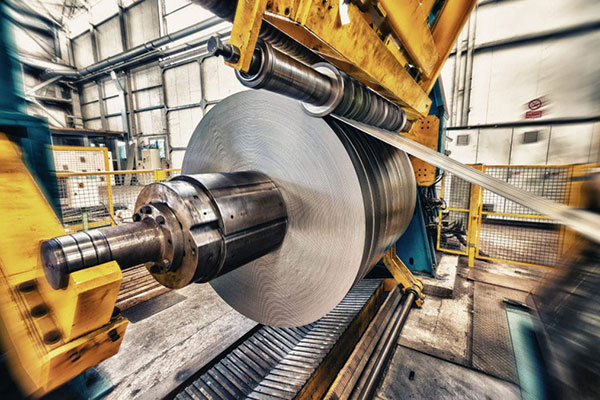It isn’t Mission Impossible; industrial machinery manufacturers can navigate tariffs and stay competitive.

By Bill Remy, CEO of TBM Consulting Group
When the United States officially imposed its global tariffs in early April, much of the early conversation centered around which industries might be hit the hardest. The auto industry was frequently cited due to its intricately connected, global web of essential parts and componentry. But if we step back and think more broadly about the tariffs now affecting steel, aluminum, machinery parts, and electronics, the industrial machinery sector is directly in the crosshairs.
In the roughly three months since the tariffs were instituted, costs for essential materials have risen sky-high and are beginning to take a toll on market leaders such as John Deere and Caterpillar. If the high prices are negatively impacting their production costs, supply chain resilience, and overall competitiveness, you can imagine the pressure middle-market manufacturers are feeling. That said, there are ways to mitigate the cost crunch and stay competitive at the same time.
We knew the tariffs were coming, and hopefully companies used that short window of time to better understand how the tariffs would impact their own businesses. In reality, though, you don’t really know until you know. Three months in, we can say with a high degree of confidence that industrial machinery makers may be facing the most difficult gauntlet of all, as steel, aluminum, machinery parts, and electronics make up the core of their entire production process. There is nowhere to hide.
An added challenge is that most precision-oriented parts, such as gears or hydraulic systems, are imported from China. Not surprisingly, this is sparking an uptick in companies considering near-shoring or reshoring certain operations before this latest round of tariffs were even announced. In fact, Chinese exports to the US were down 20% in 2023, compared to 2022. However, picking up wholesale and moving operations is a complex process that requires significant investment and can be fraught with risk – it doesn’t happen overnight.
It is an important question, and one that requires careful consideration before any final decision is made – especially for companies so heavily reliant on these raw materials. While we have seen several larger companies invest in expanding domestic manufacturing capacity – Lilly and Apple come to mind – reshoring itself may be cost prohibitive for the majority of companies for several reasons. Any alternative options they pivot to may fall short of matching China’s low pricing, and it can be difficult to leave longstanding, reliable relationships and start with a new canvas.
Additionally, if we think about the types of processes that make the most economic sense to reshore, they are likely to be high-value, complex products with strict quality standards, driven by advanced technologies and a highly skilled workforce. In light of the severe labor shortages across manufacturing, this makes the leap much more challenging. In many instances, a smarter approach is to negotiate costs with suppliers rather than run the risk of stockpiling inventory.
The challenge for industrial machinery manufacturers is clear – how can we maintain competitiveness when our essential material costs are rising, and our supply chains are becoming even more unpredictable? In developing your own mitigation strategies, start with the knowns. We know tariffs are having ripple effects. We know manufacturers are reassessing their supply networks in light of the rising costs, and that switching to any alternative providers could be counterproductive. Finally, we know that distributors will have to wrestle with delays, as the tariffs could slow customs processing and customer deliveries overall.
With these factors in mind, here are five strategies and best practices companies can immediately implement to help counter the external pressures:
1. Diversify sourcing options
Companies need to map their exposure to those suppliers that are most vulnerable to tariffs and explore alternative options that are less susceptible. Similar to an investment portfolio, a diverse sourcing portfolio helps reduce concentration risk. Opportunities exist here as well to renegotiate agreements and utilize key tariff clauses to hedge costs.
2. Recalibrate inventory management practices
Strategic inventory stockpiling can help firms offset price fluctuations and supply chain disruptions, while streamlining inventory to avoid overstocking can pare back costs. Technology can be the great equalizer here – there is an abundance of effective inventory management solutions available, powered by advanced smart technologies.
3. Assess the viability of closer-to-home production
Tracing back to the reshoring discussion – yes, shifting certain parts of the supply chain to the US could temper tariff costs but the aforementioned challenges – high labor costs, skillset availability – demand close, careful consideration.
4. Communicate is king
There is no such thing as over-communicating with customers and suppliers in these types of volatile markets. Manufacturers can help themselves and build trust by maintaining constant lines of communication and being on the front foot in terms of sharing potential price increases or delays. This removes the surprise element and allows your partners to manage expectations on their end.
5. Engage in strategic contractual adjustments
There also may be opportunities within the fine print of agreements. Industrial machinery makers may be able to work with their suppliers, for example, to put protections in place against surprise price increases or review existing contracts to ensure that they remain flexible in the midst of so much uncertainty.
One final “known” is that the industrial machinery sector finds itself at an incredibly challenging, and important, crossroads.
After all the disruption of the past five years, the tariffs will have a long-lasting impact on both the manufacturing and distribution industries. Higher costs and supply chain disruptions will come and those businesses that stay proactive and agile – and keep their eyes on planning, strategic sourcing, and strong communication will be in better position to not only offset some of the tariff brunt but continue to stay competitive and grow.
The firms that will truly separate themselves, though, are those that can harness some of the advanced smart technologies that can be so effective tackling many of the issues we have covered. The ultimate goal of the tariffs is to increase domestic productivity, but the best productivity catalyst of them all, technology, remains undefeated.

About the Author:
Bill Remy is a senior executive with over 40 years of leadership experience in business management and manufacturing operations. His areas of expertise include operational performance improvement through LeanSigma deployment in manufacturing operations, supply chain, product development and project management. He has experience in broad phases of business leadership across various industries including aerospace and defense, railway, industrial and agricultural equipment, technology and process automation.
From tradition to transformation Sequoia Brass & Copper has stood for excellence in American manufacturing. In this episode, we sit down with Kim MacFarlane, President of Sequoia Brass & Copper, to hear the inspiring story of a family-owned company founded by her father, built on craftsmanship, trust, and a relentless commitment to quality. Kim shares how she’s guided the company through the challenges of modern industry while honoring its heritage, and how the next chapter will be carried forward by her son Kyle. This is more than a story of brass and copper; it’s about resilience, innovation, and the enduring strength of family legacy. If you’ve ever wondered how tradition can meet the demands of today’s industry hit play and be inspired.